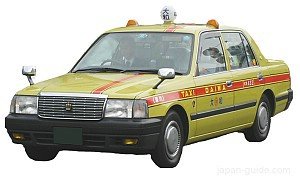You probably know that the Japanese take their shoes off when they enter a house. Shoes are considered to be extremely dirty objects which must never be brought inside unless they’re thoroughly cleaned first, and my wife keeps our old washing machine outside our house specifically for shoes, since washing them in our normal machine would be unthinkable. I once had the gaul to stand on a bench with my shoes on and got yelled at by my students for causing inconvenience to the next person who wanted to sit there, something that had never entered my mine before that point. Shoes are always left in the “genkan,” a recessed area by the front door which is officially considered part of the outside of the house (in the old days, the genkan was much larger and animals were kept there). One staple of TV dramas and boy-meets-girl anime involves a girl who comes to her boyfriend’s apartment only to see another female pair of shoes already there, an interesting dramatic twist that would be difficult to translate culturally to the West. The other day, my daughter came out to carry some bags from the car without putting her shoes on, which caused me to realize what a gaijin my little girl was. Because the soto (outside) of a house is so much dirtier than the uchi (inside), it’s all but unheard of for Japanese children to walk around outdoors barefoot.

You can view the world in many ways, from the standpoint of history, politics, the arts, or if you’re like me, comparative popular culture. Or if you like, you could focus on taxi cabs. Although we all take taxis for granted, they’re often an interesting symbol of each respective country, from the iconic Black Taxis of London to the multi-cultural mish-mash that are taxis in New York City. When my son went to Malaysia he was fascinated to see that all the taxis there were vehicles made in that country, apparently required by law, which caused us to start paying attention to taxis whenever we went somewhere new. If you ever come to Japan, be sure and take a lot of taxi rides, as it’s a real treat. Just as taxis in Germany are usually well-apportioned Mercedes Benz vehicles, 90% of Japanese taxis are the Toyota Comfort, made by Japan’s most famous automobile company specifically for the industry. Japanese taxis are extremely clean, and when they’re not driving someone to a new location, taxi drivers are usually lavishing care on their vehicles to keep them spotless. The most interesting aspect of Japanese taxis for foreigners are the passenger side doors that open and close automatically, using a hydraulic mechanism the driver can control. It’s the ultimate in convenience.
One issue of living in Japan and running an international company like J-List is dealing with the time difference between here and the rest of the world. Japan is 16 hours ahead of California, which means that when people on the West Coast of the U.S. are sitting down to dinner, we’re all just starting our morning the next day. Being ahead of everyone else has several benefits, including the ability to forget birthdays or Mother’s Day without penalty, since you can be a day late but still be in the zone. It’s a benefit for Mac users, too: I got to get Leopard, Apple’s new OS, 16 hours ahead of most of the world. Although people grumble about having to remember to set their clocks for Daylight Savings Time, it’s not a problem here since Japan never adopted the system. While not having to spring forward or fall back is nice, having it get dark at around 4 pm then going to bed while the morning sun peers through my window is kind of lame.















